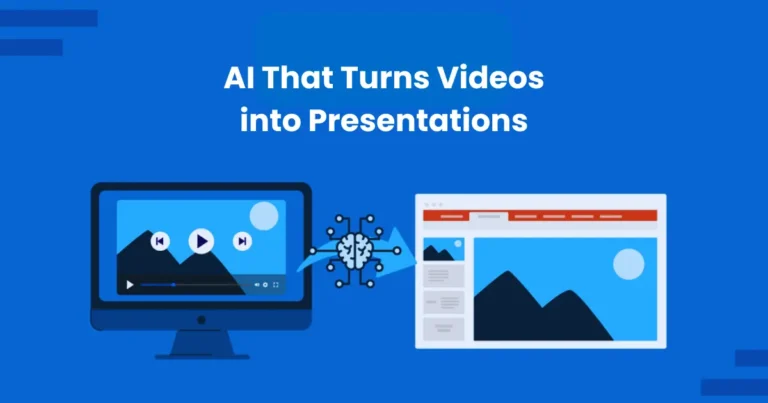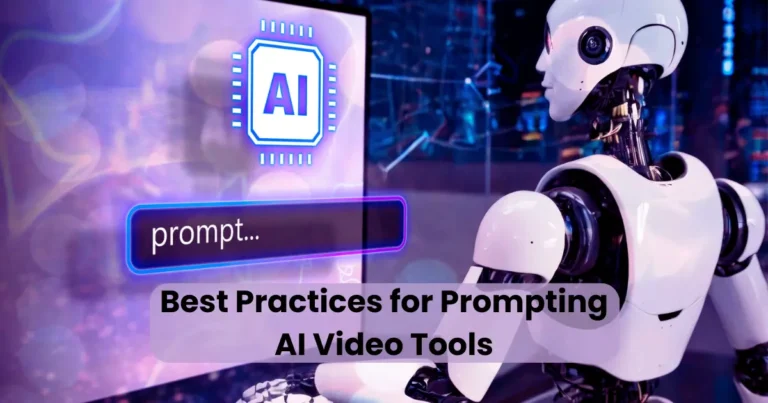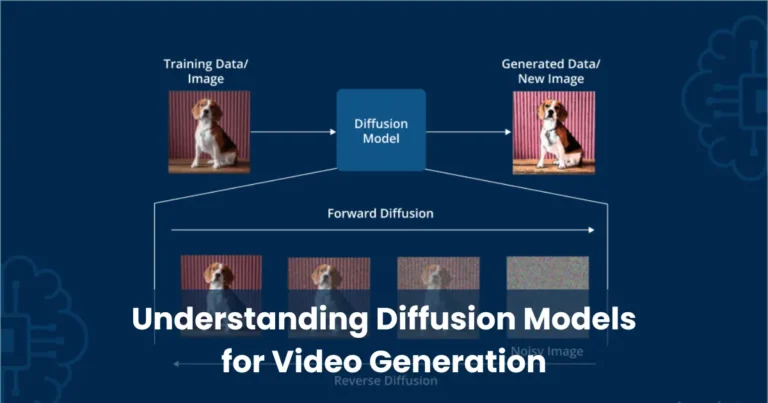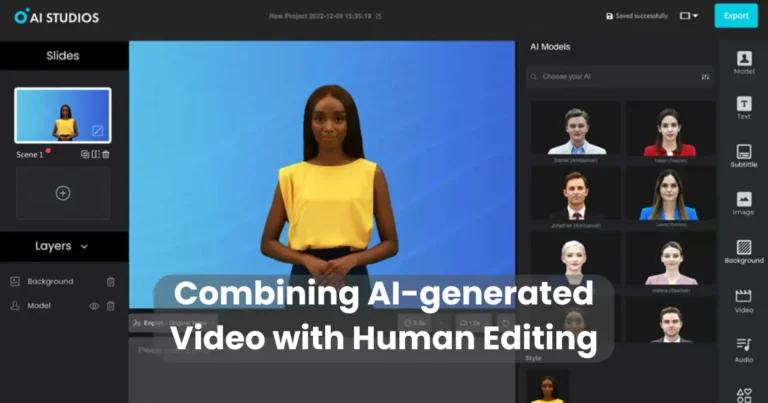Step-by-step Guide to Creating AI Videos with AI
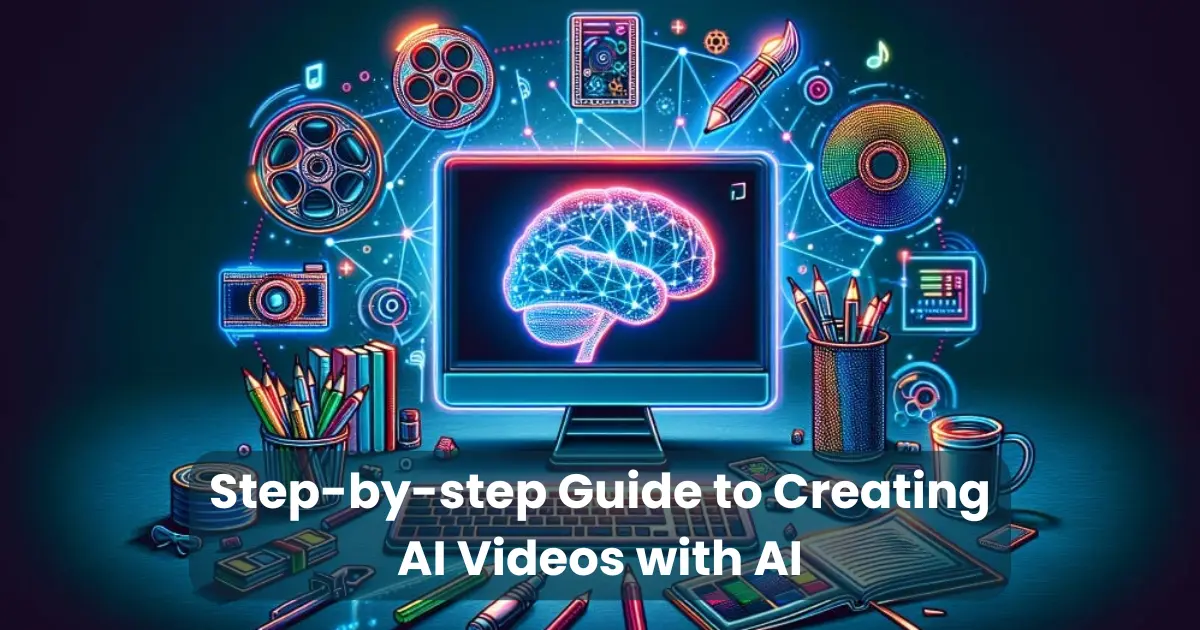
Contents
- 1 What Are AI Videos?
- 2 Why Use AI for Video Creation?
- 3 Step 1: Define Your Video Objective
- 4 Step 2: Choose the Right AI Video Tool
- 5 Step 3: Write a Script for Your AI Video
- 6 Step 4: Select AI Avatars or Voiceovers
- 7 Step 5: Customize Visual Elements
- 8 Step 6: Generate the Video
- 9 Step 7: Review and Edit
- 10 Step 8: Download and Share
- 11 Tips for Better AI Videos
- 11.1 1. Plan Ahead
- 11.2 2. Keep It Short and Focused
- 11.3 3. Use High-Quality Scripts
- 11.4 4. Choose the Right AI Tools
- 11.5 5. Leverage Visual Consistency
- 11.6 6. Add Background Music Thoughtfully
- 11.7 7. Test Different Voiceovers and Avatars
- 11.8 8. Review and Edit Thoroughly
- 11.9 9. Optimize for Platforms
- 11.10 10. Stay Updated with AI Advances
- 11.11 Conclusion
Creating high-quality video content no longer requires a film crew or hours of editing. This step-by-step guide to creating AI videos with AI will show you exactly how to produce stunning videos using AI fast, easy, and with professional results. Whether you’re a content creator, marketer, educator, or business owner, AI tools can simplify your video production process while saving time and resources.
With AI, you can generate scripts, add voiceovers, design animations, and produce videos in just a few clicks. As AI technology continues to evolve, it empowers creators to bring their ideas to life without the need for technical expertise. In the sections ahead, you’ll discover the exact steps you need to follow to create captivating AI-generated videos from scratch.
What Are AI Videos?
AI videos are videos that are created, edited, or enhanced using artificial intelligence tools. These tools automate various aspects of video production such as scripting, voiceovers, animations, scene transitions, and editing making it easier and faster to generate content. With the help of AI, you can produce explainer videos, marketing ads, tutorials, and even social media reels without traditional video recording equipment.
Unlike conventional video production, which often requires a camera crew, actors, and post-production editors, AI video creation tools streamline the process. You simply input a script or idea, choose visual elements, select a voice or avatar, and let the AI generate the video for you.
AI videos are ideal for:
- Marketing and promotional content
- Educational and training videos
- Personalized customer messages
- YouTube or social media content
- Product demonstrations
Thanks to powerful algorithms and machine learning models, these tools can mimic human speech, animate characters, and even match visuals to your script automatically. As you’ll see in this step-by-step guide to creating AI videos with AI, the process is both intuitive and effective.
Why Use AI for Video Creation?
Using AI for video creation offers numerous advantages that traditional methods simply can’t match. In this step-by-step guide to creating AI videos with AI, it’s essential to understand why more creators and businesses are turning to AI-powered solutions.

1. Speed and Efficiency
AI tools can generate complete videos in minutes. From scripting to voiceovers and visuals, the entire process is automated, saving you hours of manual work.
2. Budget-Friendly
Hiring actors, renting equipment, and paying editors can be costly. AI video creation tools allow you to produce professional-looking content at a fraction of the cost.
3. Accessibility for Non-Experts
You don’t need to be a filmmaker or editor. These tools are designed with user-friendly interfaces, enabling anyone from entrepreneurs to educators to create videos without technical knowledge.
4. Scalable Content Production
AI lets you quickly produce a large volume of videos, making it ideal for marketing campaigns, training modules, and content-heavy platforms like YouTube or TikTok.
5. Customization and Consistency
With AI, you can maintain a consistent tone, style, and branding across all videos. You can also customize avatars, languages, and voice tones to match your audience.
By incorporating AI into your workflow, you gain the ability to create smarter, faster, and more targeted content. As you follow this step-by-step guide to creating AI videos with AI, you’ll learn how to leverage these benefits effectively.
Step 1: Define Your Video Objective
Before jumping into the technical side of AI video creation, it’s crucial to define your purpose. Every successful video begins with a clear objective. In this step-by-step guide to creating AI videos with AI, goal setting is the foundation that drives every decision you’ll make in the process.
Ask yourself:
- What is the video meant to achieve?
- Who is your target audience?
- Where will the video be published YouTube, social media, a landing page, or internal training?
- What type of message or action do you want viewers to take?
Common AI Video Objectives Include:
- Marketing: Promote a product or service with an explainer or ad.
- Education: Teach a concept through tutorials or e-learning videos.
- Training: Onboard employees or clients with step-by-step instructions.
- Engagement: Create short-form content to boost social media interaction.
By setting a clear objective, you ensure that your script, visuals, and AI-generated voice or avatar all align to deliver a focused message. As you follow this step-by-step guide to creating AI videos with AI, your goal will guide the direction and impact of your final product.
Step 2: Choose the Right AI Video Tool
Once your objective is clear, the next step in this step-by-step guide to creating AI videos with AI is selecting the right tool for the job. Not all AI video generators are created equal each comes with unique features tailored to specific needs like avatars, voiceovers, templates, or animation styles.
Key Factors to Consider:
- Ease of Use: Look for a user-friendly interface with drag-and-drop functionality.
- Customization Options: Can you upload brand assets like logos, fonts, or colors?
- Voice and Avatar Selection: Does the tool offer realistic voiceovers or customizable avatars?
- Output Quality: Ensure the tool supports high-resolution exports (1080p or higher).
- Language Support: Important if you’re targeting a global audience.
- Budget: Compare pricing plans some tools offer free trials or pay-as-you-go options.
Popular AI Video Tools Include:
- Pictory: Great for turning blog posts into videos automatically.
- Synthesia: Offers realistic AI avatars and multilingual voiceovers.
- InVideo: Ideal for quick marketing and social media videos.
- Lumen5: Converts text into engaging video slideshows.
- HeyGen: Perfect for avatar-driven talking-head videos.
Choosing the right platform will directly affect your workflow and the quality of your final product. As you continue through this step-by-step guide to creating AI videos with AI, your tool will serve as the creative engine that powers the rest of the process.
Step 3: Write a Script for Your AI Video
A compelling script is the backbone of every successful AI video. In this step-by-step guide to creating AI videos with AI, crafting your script comes early in the process because it defines the structure, tone, and message your audience will receive.

Why the Script Matters
Your script acts as both the voiceover and visual guide for the video. Even with advanced AI tools, a poorly written script will result in a flat, unengaging video. Conversely, a strong script makes your message clear and memorable.
Tips for Writing an Effective AI Video Script:
- Start with a Hook: Grab your viewer’s attention within the first few seconds.
- Use Simple Language: Write conversationally and avoid jargon.
- Keep It Concise: Focus on your message most videos perform best when under 2 minutes.
- Include Visual Cues: Note when certain images, animations, or transitions should appear.
- End with a Call-to-Action (CTA): Encourage viewers to act click a link, sign up, buy, etc.
Example Script Structure:
- Introduction: “Welcome! Let’s explore how AI is changing video creation.”
- Problem Statement: “Creating videos used to be expensive and time-consuming.”
- Solution: “Now, with AI tools like [Tool Name], you can produce videos in minutes.”
- Features/Benefits: “You get avatars, voiceovers, and customizable scenes all in one platform.”
- Call-to-Action: “Start your first AI video today no experience needed!”
Whether your AI video is for marketing, education, or training, following this step-by-step guide to creating AI videos with AI ensures your script leads the way with purpose and clarity.
Step 4: Select AI Avatars or Voiceovers
Now that your script is ready, it’s time to bring it to life. In this step-by-step guide to creating AI videos with AI, the next move is to choose the right AI avatar or voiceover to deliver your message. This decision significantly impacts the tone, emotion, and overall engagement level of your video.
Why AI Avatars and Voiceovers Matter
Avatars give your video a face, making it more relatable and human-like, while voiceovers add emotion and clarity. Depending on your video’s objective, you may use either or both.
Choosing the Right AI Avatar:
- Style: Do you want a realistic human avatar or a cartoon-style character?
- Gender & Ethnicity: Choose avatars that reflect your brand or audience demographics.
- Gestures & Expressions: Some platforms let avatars move, smile, and blink for added realism.
Picking the Perfect Voiceover:
- Language & Accent: Select the language and accent that your audience understands and trusts.
- Tone: Match the tone to your goal professional, friendly, educational, etc.
- Speed & Clarity: Make sure the voiceover sounds natural and clear at an appropriate pace.
Popular Tools That Offer Avatars and Voices:
- Synthesia: Offers lifelike avatars in multiple languages.
- HeyGen: Known for expressive talking-head avatars and customizable gestures.
- Lovo.ai: Excellent for realistic AI voiceovers across industries.
- ElevenLabs: Offers premium text-to-speech with emotional tone control.
When following this step-by-step guide to creating AI videos with AI, selecting the right avatar or voiceover adds personality to your message, keeping viewers engaged from start to finish.
Step 5: Customize Visual Elements
Visual customization is where your AI video truly comes to life. In this step-by-step guide to creating AI videos with AI, personalizing your video’s look ensures it matches your brand, message, and audience expectations.
Why Customization Matters
Generic visuals may get your message across, but customized elements increase viewer retention, enhance branding, and make your video stand out. AI tools today offer vast libraries of assets you can tailor to your style.
Key Visual Elements to Customize:
1. Backgrounds
Choose from virtual environments, solid colors, gradients, or custom image uploads. Match your background to the tone of the video corporate, casual, or creative.
2. On-Screen Text
Add headlines, bullet points, quotes, or captions that reinforce your message. Use clear fonts, bold contrast, and maintain a consistent text hierarchy.
3. Brand Assets
Insert your logo, brand colors, and taglines. Many AI tools allow you to create brand templates, saving time for future videos.
4. Transitions and Animations
Smooth transitions between scenes keep the video professional and engaging. Subtle animations like text slides or image fade-ins add polish.
5. Stock Footage and Images
If your AI tool supports media uploads or integrations, use relevant stock clips or images to reinforce your points visually.
Pro Tip: Stay Consistent
Use a consistent visual style across all your videos to strengthen brand recognition and keep your audience engaged.
By customizing your visuals thoughtfully, you’re enhancing both clarity and professionalism. As you follow this step-by-step guide to creating AI videos with AI, this step transforms your video from generic to uniquely yours.
Step 6: Generate the Video
After you’ve finalized the visuals, script, and voiceovers, it’s time to move to one of the most satisfying parts of this step-by-step guide to creating AI videos with AI generating your video. This is where all your planning and customization come together in a complete, viewable format.
How to Generate Your AI Video:
- Review All Elements:
- Double-check that your script, visuals, text overlays, music, and transitions are in place and error-free.
- Preview your scenes individually if the tool allows.
- Click “Generate” or “Render”:
- Most AI video tools offer a simple “generate” button.
- Depending on the complexity and length of your video, this process can take anywhere from a few minutes to over an hour.
- Wait for Processing:
- Your tool will automatically sync voiceovers with avatars, apply transitions, and render everything into a video file.
- Make sure you have a stable internet connection during this step.
- Download or Share:
- Once rendering is complete, download the video in your preferred resolution (usually 720p or 1080p).
- Alternatively, many platforms allow direct sharing to YouTube, LinkedIn, or other social media platforms.
Pro Tip:
Some tools offer cloud rendering to free up your device while processing the video. This is especially useful if you’re creating videos regularly.
Generating the final output marks a major milestone in this step-by-step guide to creating AI videos with AI, proving how efficient and transformative AI-powered content creation can be.
Step 7: Review and Edit
After generating your video, the next essential step in this step-by-step guide to creating AI videos with AI is to carefully review and edit your final product. Even the best AI tools can produce videos that need small adjustments to perfectly fit your vision.
Why Review and Edit Matter
Reviewing ensures your video flows smoothly, your message is clear, and there are no technical glitches. Editing lets you refine visuals, fix timing issues, and enhance audio quality to create a professional result.
Steps for Effective Review and Editing:
- Watch the Entire Video:
- Check for any awkward pauses, misaligned audio, or off-sync avatars.
- Note any sections where the visuals or text don’t match the script.
- Check Visual Consistency:
- Ensure your brand colors, fonts, and logos appear correctly.
- Look for smooth transitions and consistent animation styles.
- Edit for Clarity and Engagement:
- Trim unnecessary parts to keep your video concise.
- Adjust voiceover speed or volume if needed.
- Add or tweak captions and text overlays for better readability.
- Use Editing Tools:
- Most AI video platforms offer built-in editors to make quick fixes.
- For complex edits, consider exporting your video and using dedicated video editing software.
- Get Feedback:
- Share a draft with colleagues or friends to get fresh perspectives.
- Incorporate constructive feedback before finalizing.
By investing time in this review and edit phase, you ensure your AI video meets high standards and delivers maximum impact. This step is key to completing your project successfully in this step-by-step guide to creating AI videos with AI.
The final step in this step-by-step guide to creating AI videos with AI is to download your polished video and share it with your target audience. After all the hard work, distributing your content effectively is crucial for achieving your video’s goals.
How to Download Your AI Video:
- Most AI video tools allow you to download your video in various formats and resolutions. Choose the highest quality available, typically 1080p, for the best viewing experience.
- Save your video in formats compatible with your intended platforms, such as MP4 or MOV.
Sharing Your AI Video:
- Social Media: Upload your video to platforms like YouTube, Facebook, Instagram, LinkedIn, or TikTok to maximize reach.
- Email Campaigns: Embed or link your video in newsletters to engage subscribers.
- Website and Blogs: Add your video to your website or blog posts to boost user engagement and SEO.
- Paid Ads: Use your AI video in paid ad campaigns to attract targeted traffic.
Pro Tips for Effective Sharing:
- Optimize your video title, description, and tags with relevant keywords.
- Include a clear call-to-action (CTA) in the video and post captions.
- Schedule your posts for times when your audience is most active.
By following these sharing strategies, you complete this step-by-step guide to creating AI videos with AI and maximize the impact of your content across multiple channels.
Tips for Better AI Videos
To make the most out of this step-by-step guide to creating AI videos with AI, consider these expert tips that can help you create engaging and professional-quality AI videos every time.

1. Plan Ahead
Before diving in, clearly outline your video’s goal, target audience, and key messages. Good planning saves time and improves the final product.
2. Keep It Short and Focused
Attention spans are short. Aim to keep your videos between 1 to 3 minutes to maintain viewer engagement and deliver your message effectively.
3. Use High-Quality Scripts
Your script sets the tone and pace. Use natural, conversational language and avoid jargon to connect better with your audience.
4. Choose the Right AI Tools
Select AI video platforms that fit your needs whether it’s lifelike avatars, voiceover options, or advanced customization features.
5. Leverage Visual Consistency
Maintain your brand’s visual identity by using consistent colors, fonts, and logos throughout your videos. This builds recognition and trust.
6. Add Background Music Thoughtfully
Use background music that complements your message but doesn’t overpower the voiceover or distract viewers.
7. Test Different Voiceovers and Avatars
Experiment with various AI voices and avatars to find the best match for your audience and message.
8. Review and Edit Thoroughly
Don’t rush the review process. Small tweaks in timing, visuals, or audio can significantly improve video quality.
9. Optimize for Platforms
Adjust your video format, length, and style based on where you’ll share it social media, websites, or email.
10. Stay Updated with AI Advances
AI video technology evolves rapidly. Keep learning and experimenting with new features and tools to stay ahead.
By following these tips within this step-by-step guide to creating AI videos with AI, you can consistently produce videos that captivate, inform, and convert your audience.
Conclusion
Creating engaging and professional videos has never been easier thanks to AI technology. This step-by-step guide to creating AI videos with AI has walked you through every crucial stage from defining your objective to downloading and sharing your final product. By leveraging AI tools, you can save time, reduce costs, and produce high-quality videos tailored to your audience’s needs.
Remember, success lies in careful planning, choosing the right tools, customizing your content, and reviewing your video before sharing it. As AI continues to advance, your ability to create captivating videos will only improve.
Start applying this step-by-step guide to creating AI videos with AI today, and transform your video marketing strategy with ease and efficiency!

